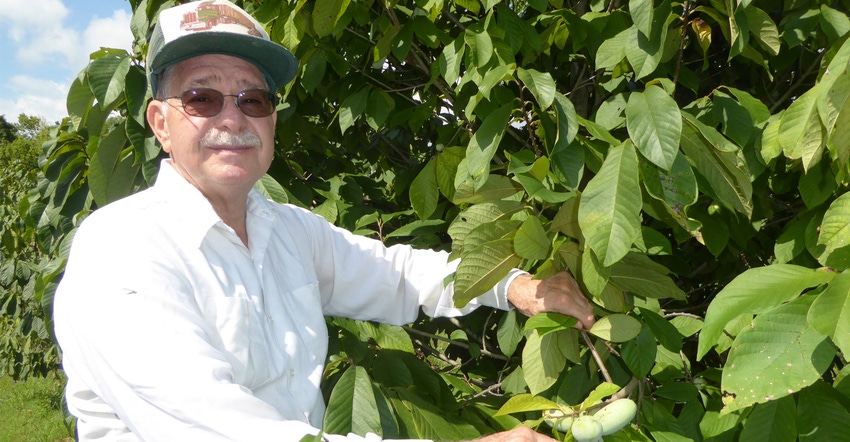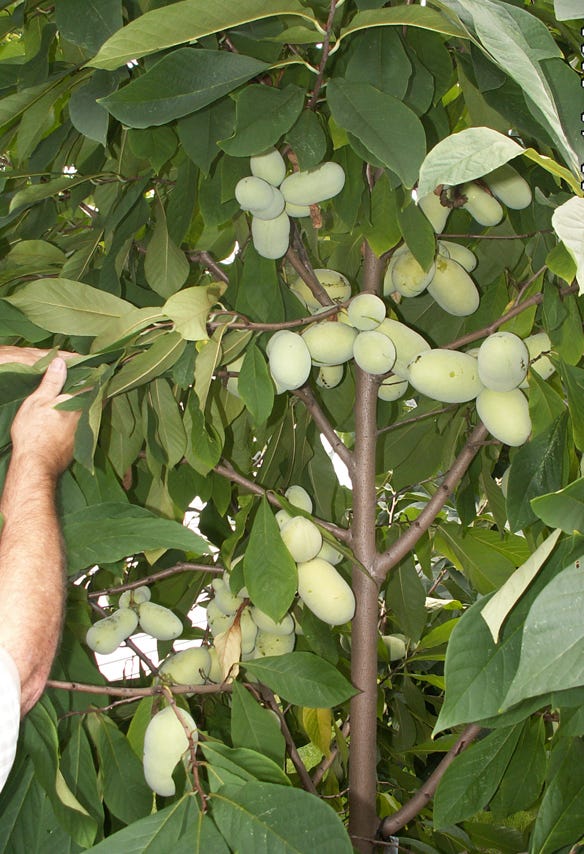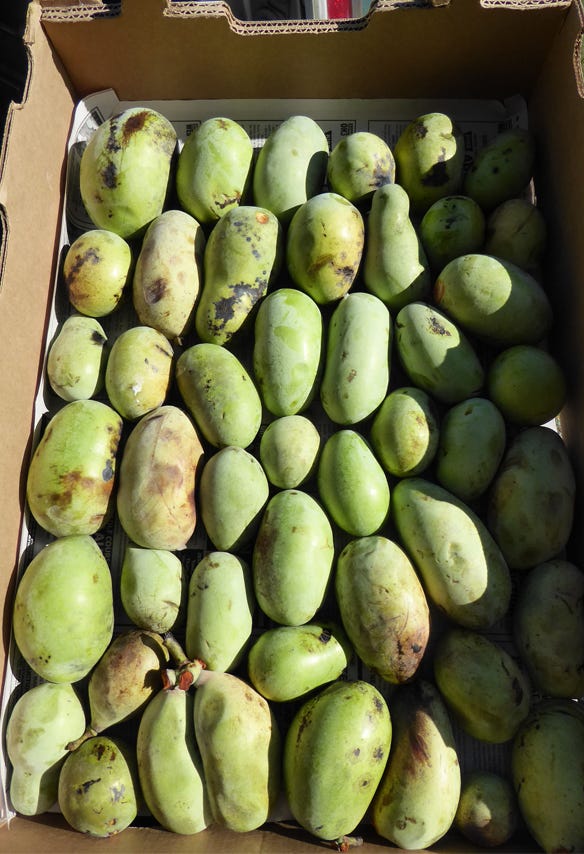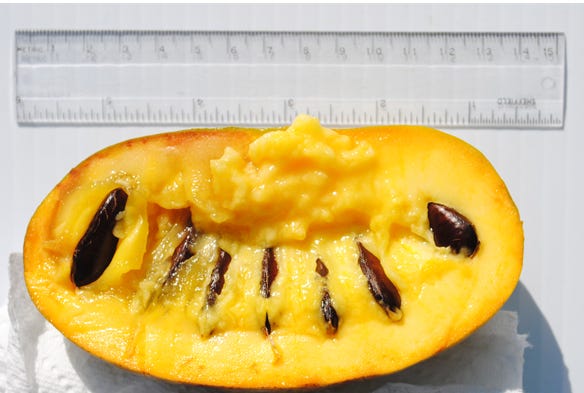June 18, 2019

By Stan Maddux
History tells us former presidents George Washington and Thomas Jefferson liked eating pawpaws, a little-known, almost tropical-like fruit. Indians and early European settlers also enjoyed them.
A Michigan man didn’t know he had such a link to the taste buds of the nation’s beginnings until after taking down some of his 400 or so pawpaw trees.
David Stumm is now a farmer of the banana-custard-tasting fruit with a flavor also compared somewhat with a mango or pineapple.
His trees in five groves are beside a creek running through a 12-acre parcel outside New Buffalo, Mich., beside Lake Michigan in the far southwest corner of the state.
Since learning how to be a grower, his trees every September have gone from yielding 300 to 1,100 pieces of the greenish, yellow fruit nicknamed “Indiana banana,” “custard apple” and “poor man’s banana.”
Despite the fruit’s delicious, sweet flavor, Stumm says he’s had limited success at selling his pawpaws to restaurants and from roadside stands because “nobody around here knows what they are.”
“Once you’ve had them and tried them, I don’t think there’s anything not to like about them,” Stumm adds.

GROWING: Ron Powell displays some of the pawpaws growing in his orchard near Cincinnati.

It was 10 years ago when Stumm, now retired from the insurance industry, moved from the Chicago area to a wooded parcel in Michigan where he built a house.
Stumm didn’t know anything grew from the trees on his property until three years later when, on the ground beneath the branches, he noticed “this strange-looking piece of fruit.”
He showed the fruit to his neighbor who told him, “My grandmother loved those. Those are pawpaws,” Stumm recalls.
By then, some of the trees already had been taken down to create a lawn for his new home. But no trees have since been cut. Instead, he cleared some of the oak, maple and other species of trees overcrowding his pawpaws, so they get more fruit-bearing rays from the sun.
Stumm says he’s also made pawpaw ice cream — along with muffins, biscuits and bread — out of the oblong-shaped fruit that is about half to three-quarters the size of a banana.
Occasionally, he purees some of his pawpaws so they can be frozen and eaten months later.
“It’s interesting that you can walk to the woods and find something that tastes this good,” Stumm says. “Pretty surprising.”

LOW PROFILE: Pawpaws are a fruit high in protein, vitamins and antioxidants. They are not on the radar screens of big agriculture or offered in most supermarkets, but they can be found at some farmers markets and specialty shops.

Pawpaw trees are native to 26 states from the Gulf Coast to the Great Lakes. The fruit high in protein, vitamins and antioxidants is not on the radar screens of big agriculture or offered in most supermarkets, but it can be found at some farmers markets and specialty shops.
The market is limited because pawpaw trees grow in the wild along riverbanks and streams and have a shelf life at room temperature of only two to three days, says Ron Powell, president of the Ohio Pawpaw Growers Association.
He said there also are not enough suppliers for commercial processing of the fruit to be cost-effective. Powell says pawpaws, however, are making slow but steady gains toward becoming a mainstream commodity.
All the pawpaws from his 500 or so trees near Cincinnati, for example, are sold for making beer at Upland Brewery in Bloomington, Ind.
Powell says he also knows a grower whose product, after pureed and frozen, is carried by Kroger. The key is continuing to educate the public, he says, about pawpaws and how to best eat the fruit.
“We’re getting there, but it’s just a slow process,” he adds.

SOFT INSIDE: The inside of a pawpaw is softer than a ripe banana with anywhere from a half-dozen to a dozen lima bean-sized seeds.

Getting after the fruit is not as simple as taking a bite out of an apple. It’s done by peeling the slightly bitter, avocadolike skin with a knife.
Pawpaws also can be cut in half, and the creamier-than-a-soft-banana fruit can be eaten with a spoon. The fruit is obscure enough that it may be known more for its association with the city of Paw Paw, Mich.
The community of 3,500 residents incorporated in 1837 was named because of the once-plentiful trees bearing the fruit along the Paw Paw River.
Powell, who also raises hazelnuts and persimmons, says his wife started planting the pawpaw trees on their property a half-mile from the Ohio River close to 20 years ago.
It started as a hobby, and numerous varieties of pawpaws were added to what he views as more of a collection than a crop.
“I enjoy it, and if I make a buck or two off of it, that’s fine,” he says.
Maddux writes from New Buffalo, Mich.
You May Also Like




